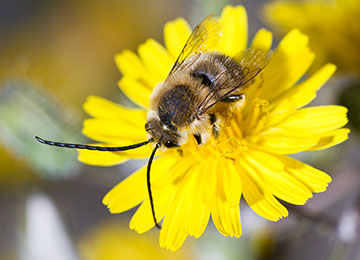Newsletter
March 2022 - New research on native bees in East Texas


An American Bumblebee (top) and Longhorn Bee
The United States boasts nearly 4,000 native bee species, many of which provide essential pollination services for agriculture and native ecosystems. Our knowledge of native bee life history, status and trends is severely limited. Data on bee occurrence, habitat preference and management impacts are not readily available for natural resource managers.
Currently, the U.S. Fish and Wildlife Service is considering three bumblebee species for listing under the Endangered Species Act. All three – the American, variable cuckoo and Sonoran bumblebee – occur in Texas. To address priority data gaps, the Comptroller’s office is providing funding to Sam Houston State University to conduct surveys, organize a volunteer survey network, evaluate land management techniques and consolidate museum records. This comprehensive effort will build and improve upon data for bee species, with a focus on bumblebees and longhorn bees in East Texas. Learn more about this research.
March 2022 - Final research available on spot-tailed earless lizards

A juvenile plateau spot-tailed earless lizard remains motionless to avoid detection near Junction, Texas. 2018 June. Photo credit: Colin McDonald
The Tamaulipan spot-tailed earless lizard occupies coastal South Texas, while the Plateau spot-tailed earless lizard can be found along the Edwards Plateau region of Central and West Texas. The U.S. Fish and Wildlife Service is evaluating both species for listing under the Endangered Species Act. This decision will rely upon the best available science about the species’ needs, habitat and potential threats.
In 2018, the Comptroller’s office provided funding to Texas Tech University to assess habitat quality and quantity throughout the current and historic range of the species. The goal is to understand the extent of habitat and how it has changed through time to inform discussions of potential threats and conservation actions for the lizards. Learn about the results of this study in the final report.

